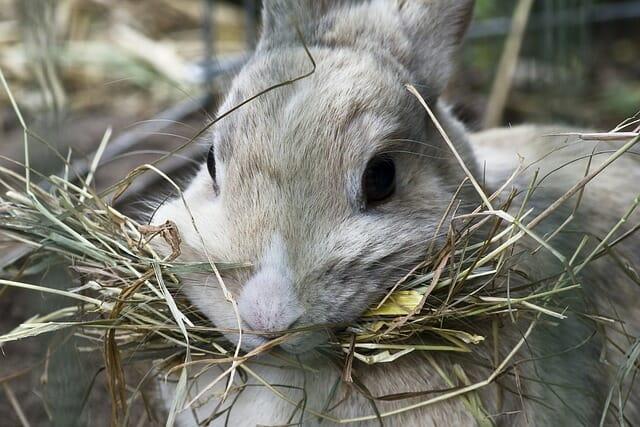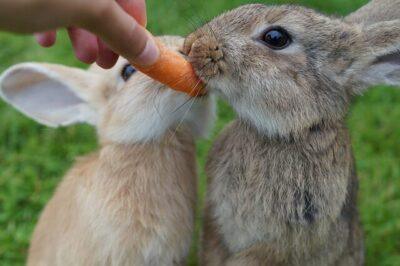Rabbit breeders around the country raise more than 30 million rabbits a year, and most of them feed rabbits little other than commercial pellets. This food has the perfect protein and nutrients and is reasonably priced at $14 to $20 for a 50-pound bag.
Just one problem. What happens when the supply line is severed during a storm or long-term power outage and you can’t get that 50-pound bag? Well, that’s the world I plan for, so the goal with your rabbits should be to feed them from sustainably produced food from the homestead.
But it’s hard work. Then again, if hard work scares you, buy the rabbit pellets.
Learn Everything You Don’t Know In “The Big Book Of Off The Grid Secrets”!
To successfully feed rabbits, you must first understand their diet. Full-grown rabbits that are not pregnant need 12-15 percent protein in their diet. Pregnant does and growing young need 16-18 percent protein for optimal health and growth.
So, you need a source of protein, keeping in mind that rabbits are vegetarian.
If you have enough land and the resources to grow hay, then high-protein crops like barley, alfalfa, oats and soybeans can make up much of the diet.
If you have limited space and ability, like me (I live in a mountain forest), then other options are available. For example, I grow peas and podded radishes for roughage, and soybeans for hay. This provides some protein and fiber. Most of what the rabbits eat, however, comes from the plants I forage for on the homestead. I go out daily and forage for dandelion greens, clover, a legume-like wild plant that grows like a weed all over the place, ferns, numerous weeds I have no name for but the rabbits love, maple leaves, oak leaves, and young blackberry leaves and twigs (before the thorns harden on them).
Of course, foraging only works if you know what is healthy for rabbits to eat, and what is poisonous to rabbits.
There are hundreds of websites purporting to list what rabbits can and can’t eat. However, sometimes they are wrong and sometimes they conflict. For example, some websites say soybeans are fine (and they are for my rabbits); others say they are not. So, if you’re not sure about whether a new plant is OK, test it out. Rabbits are smart and generally won’t eat something poisonous to them.
When there’s a new plant you’d like to feed to them, take a small piece of it and mix it in with something your rabbits regularly consume, like dandelion greens or pea sprouts. The rabbit will sniff the new plant and do one of three things: devour it, nibble on it, or ignore it. A plant that is immediately devoured can probably be a new staple in their diet. If they nibble on it, then gradually introduce it and see how the herd likes it. If the rabbit ignores it, then avoid feeding it to them.
Diatomaceous Earth: The All-Natural Livestock De-Wormer!
Feeding your rabbits sustainably requires patience and hard work. Keep these thoughts in mind when striving toward that goal:
- While 12-18 percent protein is optimal, young rabbits on a higher fiber, lower protein diet will do fine. It’s just that they will take longer to mature. For example, kits (baby rabbits) fed on an ideal protein diet take about eight to 10 weeks to mature to slaughter weight, while those on a lower protein diet can take 14 to 20 weeks.
- Feeding rabbits sustainably is not an absolute. You can work toward it gradually. On my homestead, I generally grow enough and forage enough to feed my herd sustainably. But I still buy some high-protein pellets for pregnant does and for the herd during winter. Every year, I buy fewer bags of pellets, but I’m not yet to the point of full sustainability.
- Don’t forget about barter. Try and set up a system for trading rabbit meat for food for your other rabbits. For example, I have a deal where I trade one rabbit for two large bales of alfalfa hay—enough to help feed my rabbits for a couple of months. Rabbit meat is a great commodity. Don’t be afraid to barter with it.
How do you feed your rabbits sustainably? Share your thoughts in the section below:
 Off The Grid News Better Ideas For Off The Grid Living
Off The Grid News Better Ideas For Off The Grid Living





